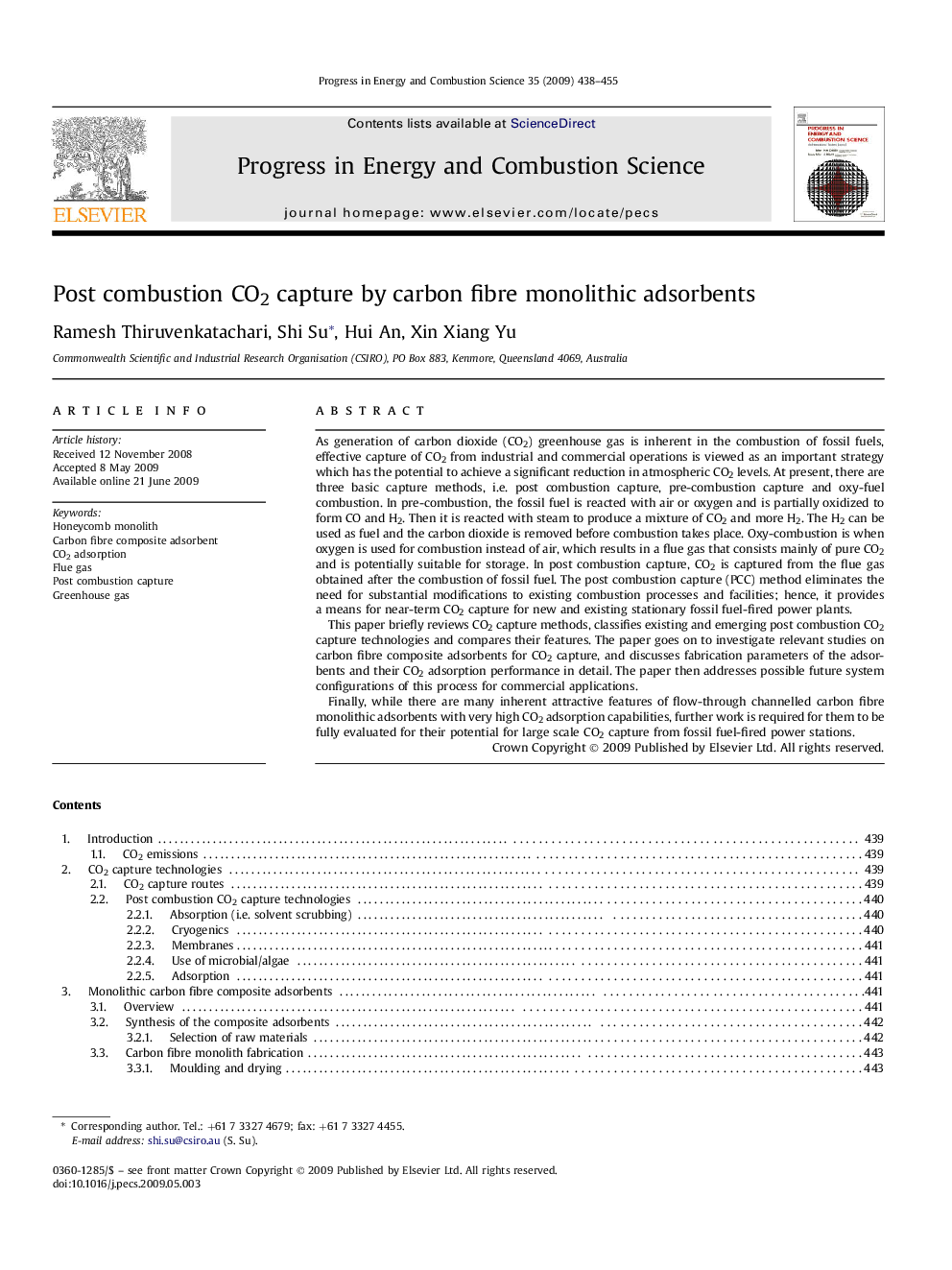| Article ID | Journal | Published Year | Pages | File Type |
|---|---|---|---|---|
| 241811 | Progress in Energy and Combustion Science | 2009 | 18 Pages |
As generation of carbon dioxide (CO2) greenhouse gas is inherent in the combustion of fossil fuels, effective capture of CO2 from industrial and commercial operations is viewed as an important strategy which has the potential to achieve a significant reduction in atmospheric CO2 levels. At present, there are three basic capture methods, i.e. post combustion capture, pre-combustion capture and oxy-fuel combustion. In pre-combustion, the fossil fuel is reacted with air or oxygen and is partially oxidized to form CO and H2. Then it is reacted with steam to produce a mixture of CO2 and more H2. The H2 can be used as fuel and the carbon dioxide is removed before combustion takes place. Oxy-combustion is when oxygen is used for combustion instead of air, which results in a flue gas that consists mainly of pure CO2 and is potentially suitable for storage. In post combustion capture, CO2 is captured from the flue gas obtained after the combustion of fossil fuel. The post combustion capture (PCC) method eliminates the need for substantial modifications to existing combustion processes and facilities; hence, it provides a means for near-term CO2 capture for new and existing stationary fossil fuel-fired power plants.This paper briefly reviews CO2 capture methods, classifies existing and emerging post combustion CO2 capture technologies and compares their features. The paper goes on to investigate relevant studies on carbon fibre composite adsorbents for CO2 capture, and discusses fabrication parameters of the adsorbents and their CO2 adsorption performance in detail. The paper then addresses possible future system configurations of this process for commercial applications.Finally, while there are many inherent attractive features of flow-through channelled carbon fibre monolithic adsorbents with very high CO2 adsorption capabilities, further work is required for them to be fully evaluated for their potential for large scale CO2 capture from fossil fuel-fired power stations.
